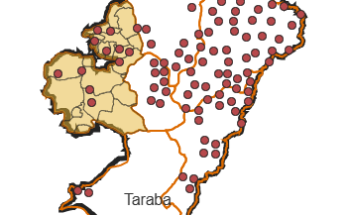
This study analyses maize value chain in Nigeria and Rwanda assessing the vulnerability and risk management in both countries. Using tailored survey data derived from maize-producing states in the study area with the help of Remote sensing and GIS techniques for data processing. Pre-processing of the satellite imageries was done to correct geometric and radiometric errors due to altitude and other distortions that occurred during imaging process. This study carries out five tasks, first to map, assess and compare the value chains of maize product in in Nigeria and Rwanda which clearly revealed that the climate region, planting period, drying methods, moisture content, materials used for packaging, storage place and marketing strategies differ for the two countries.
Similarly, the study shows that group lobbying, patronage networks, and ethnic and regional political ties all play a role in relative preferences for output market subsidies, input market subsidies, and trade restrictions. Second, the study found out key vulnerabilities in the supply chains for both countries to include lack of access to improved seeds, pesticides and fertilizer, adoption of primitive methods, poor rainfall and increase in temperature due to seasonal variability, poor post-harvest dry and storage facilities, inadequate transport system, limited access to long term credit facilities and substandard quality of maize on formal and informal markets which are always driven by failure to implement government policies in both countries, producer scale, limited technical skills in new techniques, low farmer income and poor price incentives, lack of public and private transportation capacity, and limited commercialization constrained by poor access to output and cost overrun, poor quality, low profit margin respectively. Third, we used remotely sensed data to analyse the land use land cover changes in the Nigeria domain, evaluate the existing links between farmlands, road networks storage facilities and markets, rail water resources.
The study revealed that land use land cover supervised classification for the five states under study in Nigeria shows that there was a significant increase in the built-up area for the five states and a decrease in the green areas due to rise in development resulting from population surge over the 20 years. Fourth, the study models the optimal transportation network from farm to markets in the study area to reduce the vulnerabilities of food distribution to markets and end users. The study revealed that some maize farms are relatively closer to some existing markets whiles others are very far from the available markets. It was observed however that even though there exist some markets, there are no good roads connecting to the markets which lead to loss of time while transporting the farm produce to the markets which in turn affect the food value chain which leads to food losses and shortage in the study area. Fifth, the study suggests control measures for the vulnerabilities and possible solutions for managing the associated risk. The study thus suggests that improved security for farmers, implementation of maize related value chain policies and resuscitation of existing ones and review of unfavourable policies should be encouraged thereby creating commodity exchange market for farmers; provide functional extension services to advance knowledge impartation to maize farmers, profiling of farmers for input distribution and collection of produce; and provision of adequate storage facilities to support farmers.






